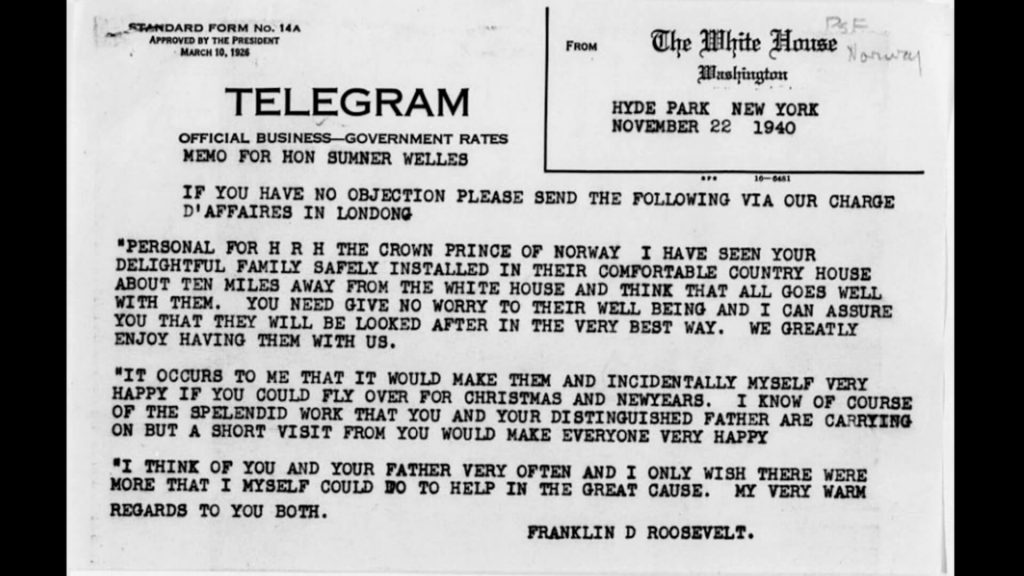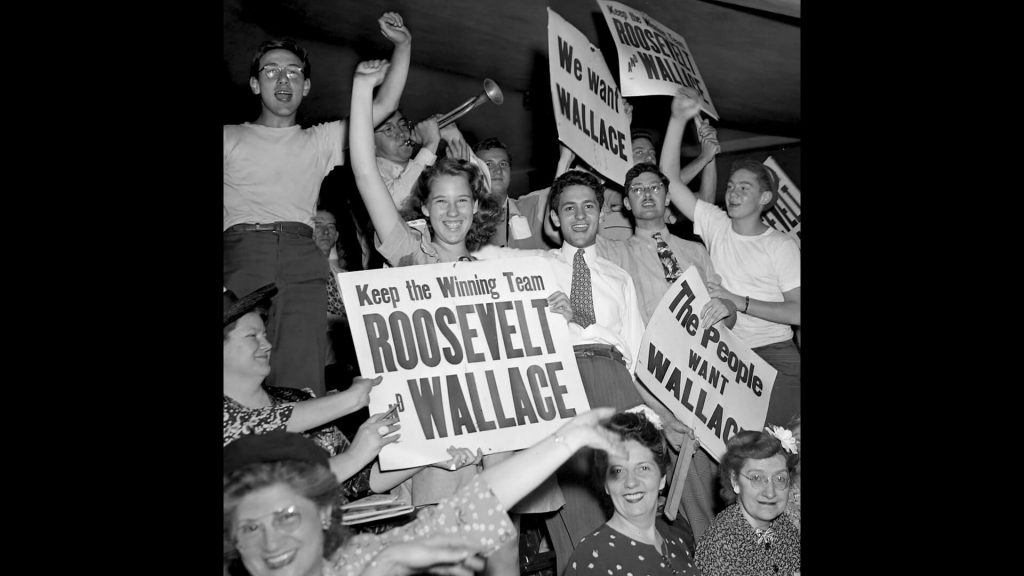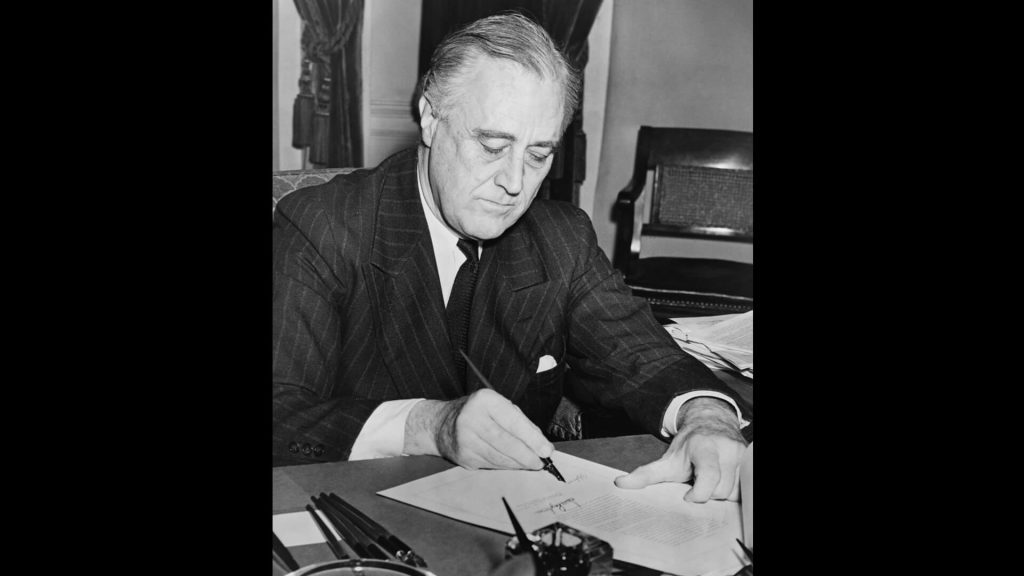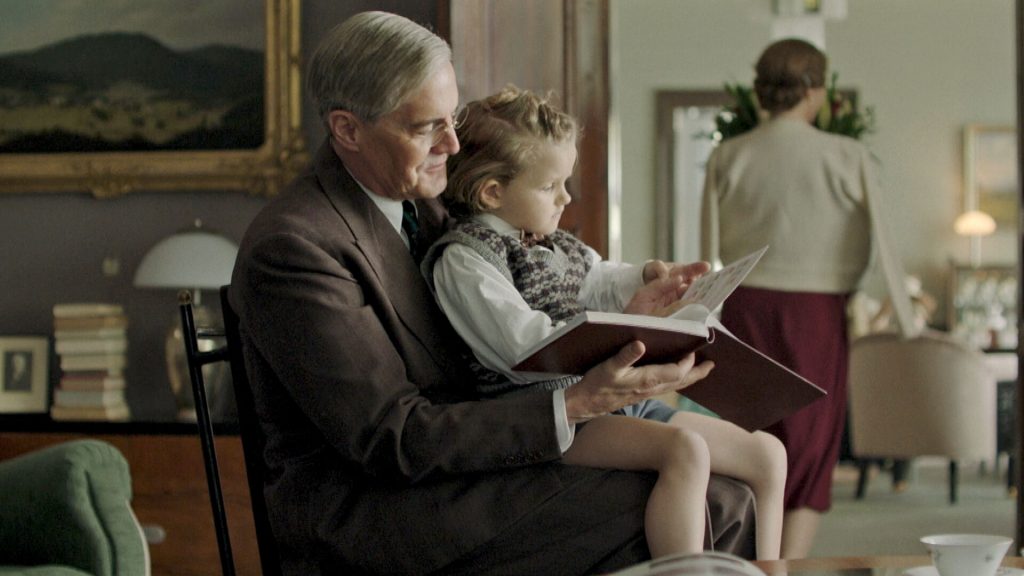Fact or Fiction: Inside Episode 4
Did Princess Martha truly sway Roosevelt’s political actions? Was the President reluctant to run for a third term? And did he actually have time to help Martha house-hunt? Discover which details and events in Atlantic Crossing Episode 4 really happened, and which didn’t.* [Contains spoilers.]
- 1.
Fact or Fiction: FDR helped Martha house-hunt!


FDR's telegram to Prince Olav, dated Nov. 22, 1940. Courtesy of the Franklin D. Roosevelt Presidential Library archives. FACT: President Roosevelt was involved in several of Martha’s trips to search for a home outside of Washington, D.C.—and was present when they found Pook’s Hill, says Atlantic Crossing‘s co-writer and historian, Linda May Kallestein. The Tudor-style mansion was owned by publisher Merle Thorpe and sat on 150 acres in Bethesda, MD. Thorpe named his home after Rudyard Kipling’s novel, Puck of Pook’s Hill. Princess Martha first leased the estate, moving in in late autumn 1940. The royals eventually purchased the property outright and lived there for the war’s duration. Later owners demolished the house and subdivided the property, which now includes condos and a hotel. For scenes in Atlantic Crossing, Chateau Kotěra in the Czech Republic stood in for Pook’s Hill.
- 2.
Fact or Fiction: The President wasn’t eager for a third term in office.


Delegates at the Democratic National Convention in Chicago, 1940. FACT: Roosevelt had actually begun retirement plans during his second term , anticipating a quiet life in Hyde Park and the building of a presidential library there. But after Hitler’s series of invasions in the spring of 1940, FDR reconsidered his responsibilities, say Atlantic Crossing writers.
He chose to remain silent about another run for office, according to the Franklin D. Roosevelt Presidential Library and Museum, not wanting to be viewed as willing to upend the two-term tradition. The President didn’t even attend that summer’s Democratic National Convention but sent Harry Hopkins to organize a spontaneous draft of his candidacy, had a cryptic message read to delegates, and pulled Eleanor away from a July vacation to also go speak on his behalf—the first time the spouse of a presidential candidate addressed a party convention. Roosevelt was ultimately reelected president for an unprecedented third time and spent the next year preparing the American public for war.
- 3.
Fact or Fiction: Martha influenced the President's wartime decisions.


President Franklin D. Roosevelt signing the Lend-Lease Act on March 11, 1941. FICTION: If Martha’s close friendship with Roosevelt ever did sway him on policy, “it is not documented in any written sources, which isn’t odd at all,“ says Kallestein. “She wasn’t appointed by the Norwegian government to hold an official role … and was never considered an important figure.”
In terms of the Lend-Lease Act for example, while Martha had lobbied the President to help Norway, he had considered renting or lending munitions to U.S. allies of his own accord, say Atlantic Crossing writers. Those plans accelerated once British Prime Minister Churchill wrote him in December 1940, disclosing the U.K. could no longer pay for American-made war supplies; their previous “cash and carry” arrangement. The Lend-Lease Act was approved by Congress in March 1941 and gave Roosevelt virtually unlimited authority to direct material aid to the war effort without violating America’s official position of neutrality.
The Episode 4 scene where FDR presents the idea over cocktails on Christmas Eve 1940 is fiction: His historic press conference on the subject really occurred on December 17, 1940. And while the President used the metaphor of lending a fire hose to his neighbor when publicly presenting the idea of lend-lease, there’s no evidence it was inspired by Martha’s anecdote about a fire at the royal’s Skaugum estate back in Norway.
- 4.
Fact or Fiction: Roosevelt had a lifelong passion for stamp collecting.


FACT: Collecting stamps was a hobby he began as an only child and the President ultimately owned over a million different examples from around the globe. Atlantic Crossing writers say their research reveals he unwound with his collection almost daily, often just before bed. While President, he brainstormed new stamp designs, colors, and themes with his Postmaster General. FDR took albums with him on his travels abroad and actually did introduce Martha’s children to his hobby, says Kallestein.
*Based on a series of articles (in Norwegian) written by Mari Aftret Mørtvedt and Ola Nymo Trulsen for NRK, the Norwegian Broadcasting Company.




















